8 Different Types of Wood Mulch (With Pictures)
-
Kristin Hitchcock
- Last updated:

Choosing a mulch seems to be a rather simple choice, but it isn’t always that straightforward. There are actually many different kinds of wood mulch, each with its own benefits and aesthetics.
Of course, choosing the correct type of wood mulch is hard to do if you don’t know all the different types available. Therefore, to lend you a hand, in this article we’ll be looking at all the different types of available options.
The 8 Different Types of Wood Mulch
1. Pine Needles
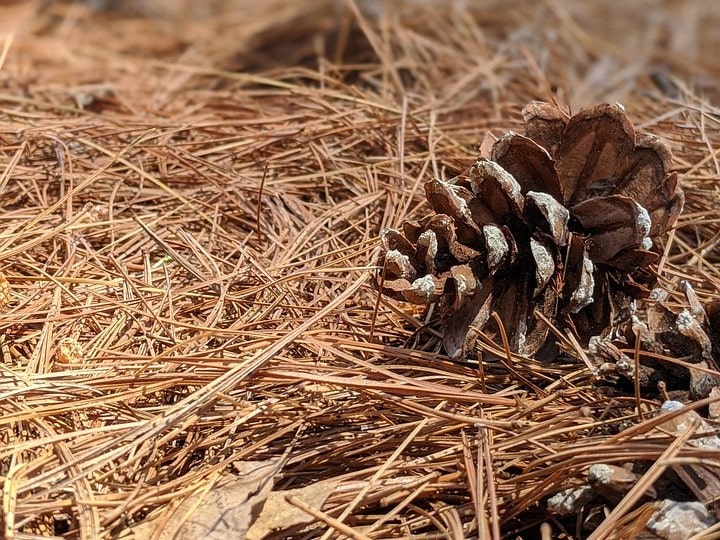
- Use: For acid-loving plants
When you first think of wood mulch, you probably don’t think of pine needles. However, they are actually a great option for plants that like their soil to be more acidic. As the pine needles decay, they will increase the pH of the soil.
Pine needles are also extremely fragrant, which allows them to add a nice scent to your yard. However, many animals do not like the smell of pine needles and so they can be used to keep some animals away from your flowerbeds.
Pine needles are often a unique option for those looking for something a bit more eye-catching. Using pine needles for mulching purposes is not very common, so it will set you apart from your neighbors. Plus, they are often very inexpensive and easy to work with.
- Fragrant
- Acidic
- Unique
- Inexpensive
- Not suitable for all plants
2. Bark
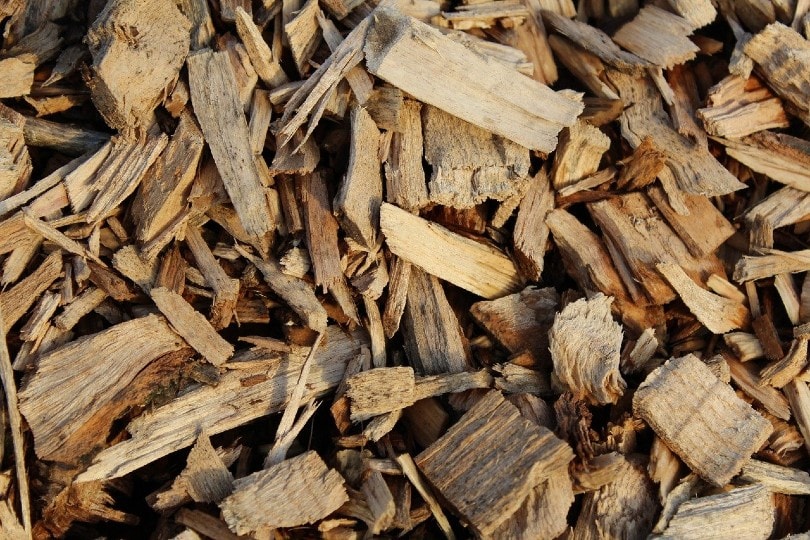
- Use: Aesthetic purposes
If you’re mulching your yard largely for aesthetic purposes, you should consider utilizing bark. It is one of the most attractive mulches around due to the naturalness of the color. This sort of mulch is extremely easy to do on your own and often very inexpensive, and you can find bark mulch in most areas.
Bark mulch also allows water to flow into the ground more easily, making it a great option for water-loving plants and flood-prone areas. Plus, once it decays, bark adds back a lot of nutrition to the soil. It also should be safe for most plants.
- Aesthetically appealing
- Inexpensive
- Easy to do on your own
- Allows water to enter the soil
- Color isn’t always as even as other options
3. Wood Chips
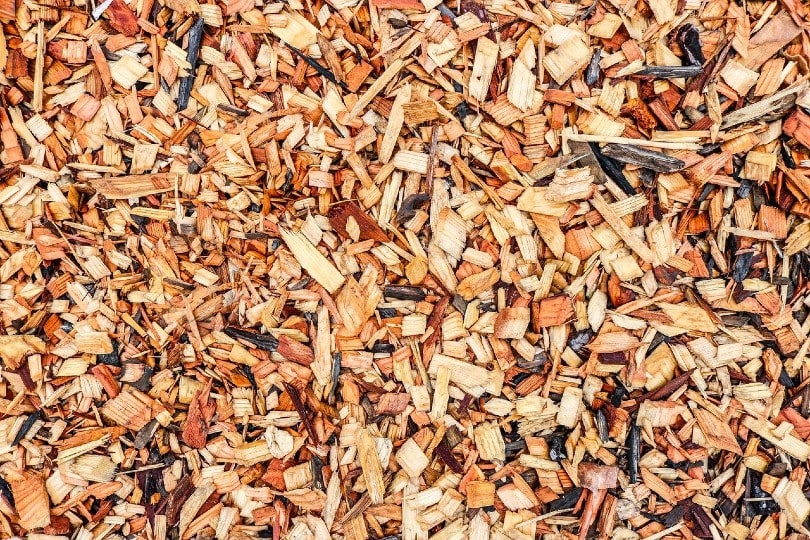
- Uses: Budget option
Many new homeowners and those looking for a budget option may decide to use wood chips to mulch their yard. However, this is not recommended unless you simply need the cheapest option available. Wood chips are inexpensive for a reason. Sometimes, you can even get them for free.
Wood chips often decay very quickly, so you’ll need to mulch the area often. They also don’t look as good since their size and shape can be very haphazard, plus they may even introduce pests depending on the branches used. You never know what you’re getting with wood chips.
- Budget option
- Easily accessible
- Can introduce pests
- Not very aesthetically pleasing
- Decay quickly
4. Colored Mulch
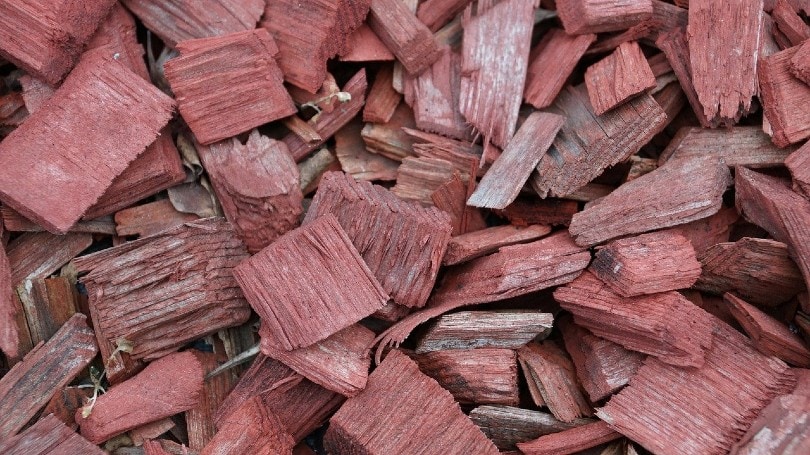
- Uses: Extensive mulching
For those that need to mulch a large area, colored mulch is often used as it is the most uniform option. Usually, this type of mulch comes in reds and blacks, though specialty colors are available as well. Because of the extra work that gets put into this mulch, it is often more expensive. It isn’t odd for the colors to fade in the sun, which eventually ruins the appearance.
Luckily, the dye used is safe and non-toxic and it’s usually just fine with most plants. However, it can transfer to your hands when you’re spreading it.
With that said, colored mulch can come from two sources: plain, safe wood, and treated hardwood. Usually, treated hardwood comes from demolished buildings and construction projects. Dyeing the wood covers up the imperfections and makes it easier to sell. However, it can potentially leach chemicals into the ground which can ruin a garden.
- Even coloration
- All sorts of colors available
- Uniform appearance
- Potentially unsafe
- Colors fade quickly
- Expensive
5. Non-colored Mulch
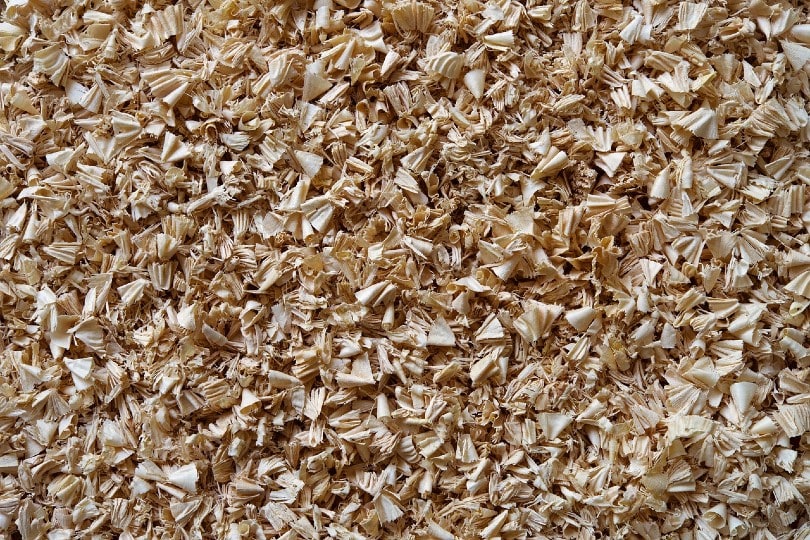
- Uses: Various
Non-colored mulch is simply any sort of wood shavings that are not dyed. Some of the other mulches on this list would technically fall into this category.
Often, this type of mulch is extremely inexpensive but doesn’t have many benefits and isn’t particularly aesthetically pleasing. Instead, it’s commonly used in construction, especially when a new home has just been built. Homeowners that make their own mulch usually end up with non-colored mulch, which they may then use in their yard.
- Inexpensive
- Widely accessible
- Not very aesthetically pleasing
6. Cedar Mulch
- Uses: Fragrant insect repellent
Cedar mulch is the all-star of mulches. It is extremely fragrant and much-hated by insects. Therefore, it is a great way to keep pests away from your garden and home. Not only can this save your garden, but it can also save your home. If termites tend to be a problem in your area, you should pay the extra price for cedar.
Because it is such a specific wood, though, cedar mulch is usually expensive. It has to be shipped into most areas, which is the main reason it is so pricey.
On the other hand, cedar also lasts a long time. This feature is a bit of a double-edged sword. While it does mean you won’t have to redo the mulch for a while, it also means that this mulch won’t add many nutrients back into your soil.
- Insect-repellant
- Long-lasting
- Expensive
- Doesn’t add much to the soil
7. Cypress Mulch
- Uses: Aesthetic
Cypress mulch is similar to cedar. It repeals bugs in a similar manner, which makes it a great option for gardens and areas with a lot of termites. However, unlike cedar, cypress mulch is an attractive blond coloration, which makes it a bit more aesthetically pleasing.
However, cypress mulch is much more expensive as it’s difficult to harvest. Furthermore, cypress trees are essential for the environment, and removing them can do lots of damage.
- Repeals bugs
- Aesthetically pleasing
- Expensive
- Environmentally harmful
8. Straw
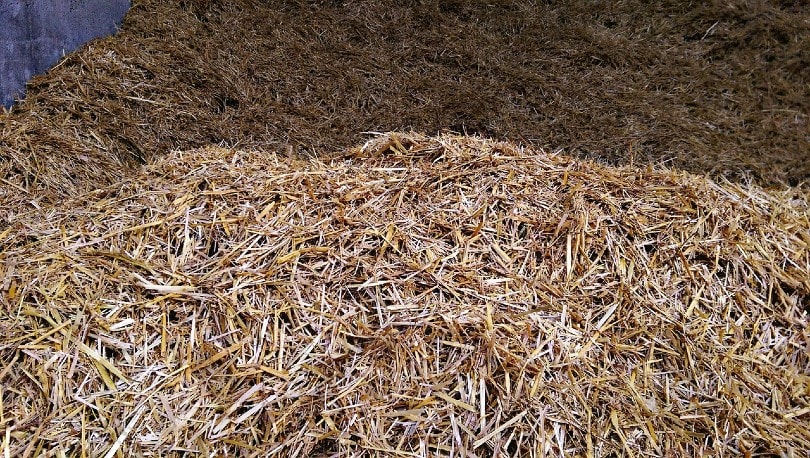
- Uses: Gardening
Straw may not be a traditional mulch. However, it is a great option for those that garden. It has great insulating qualities which can be a good option for some gardens. You can also continuously turn the soil over as it decomposes which adds many nutrients to the soil.
Many people use straw over new developments to add some nutrients back to the soil, allowing grass to grow.
Furthermore, it is cheap and lightweight. Most people can spread it themselves, which also reduces your labor costs.
- Decomposes quickly
- Insulating
- Cheap
- Easy to work with
- Must be redone annually
Related Read: 8 Best Leaf Mulchers – Top Picks & Reviews
Conclusion
There are many different types of mulch out there – each with its own specific uses and benefits. Choosing the best option for your yard is a matter of figuring out why you’re mulching your yard and choosing a mulch that best aligns with that purpose.
For instance, if you’re mulching a large area, then you may decide to purchase colored mulch so that it looks more uniform. However, if you’re mostly trying to get grass to grow, straw is preferable as it insulates the soil. Alternatively, you may decide to use cedar mulch in your permanent garden beds to keep bugs out. As we’ve said previously, the important factor is that you match the mulch according to your needs.
You might also be interested in: 10 Gardening Facts – Trivia and Statistics on Gardening
Featured Image Credit: Alfo Medeiros, Pexels
Contents
